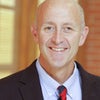The scientific evidence supporting high-intensity exercise is very solid. This is true for elite athletes, people who are just , and even . Exercise, however, is not risk-free. People do die and have other catastrophic health events while working out.
What are the risks of high-intensity exercise—and who should be worried?
Heart Attack and Stroke
The big concern is about the risk of heart attack, stroke, or some other catastrophic event during training. This is especially true for people who either have a history of prior events or have a lot of traditional like diabetes, hypertension, high cholesterol, smoking and inactivity.
There is a that has pioneered the use of high-intensity training in cardiac patients and they report that even in well-screened and monitored patients high-intensity exercise can be somewhat risky. While people doing moderate inensity may experience one event every 15 years, those in the high-intensity group experienced one every three years. At some level, these numbers show just how safe intense exercise can be in high risk groups, but they do point out that rare and potentially catastrophic events are more common with high-intensity exercise.
Middle-Aged Men
The case of , who suffered a major stroke after a high-intensity workout, is a cautionary tale. He had been feeling off his game and interpereted these non-specific symptoms to be signs of stress and poor fitness—intead of the minor story they really were.
Marr isn't uniquie. His story is about a hard-driving middle-aged guy who doesn’t feel right, figures he is out of shape, reads that high-intensity will give him the most bang-for-the-buck, and goes for it—only to have a catastrophic outcome. To me his story is emblematic. The high-intensity approach can feed into the data collection mindset that prolifreates fitness. The potential for misinterpretation by middle-aged super achievers is high.
Who knows what Marr’s history was before his stroke? Had he been a smoker, was he hypertensive, what were his lipid levels, what was his family history… Most of this is simple stuff that could have picked up with a reasonable screening physical prior to starting an exercise program.
Who Should be Screened?
To get some ideas about who should be screened I contacted and an expert on exercise in middle-aged people. Chip still runs an occasional road race and interval trains from time to time. Here is what he told me in an e-mail:
…for middle aged people, particularly those who have been sedentary or with CHD risk factors, they should at least have a physical exam and clearance from their clinician and probably an exercise stress test before doing such hard, intense training -this would not be necessary to do a walking or slow jog program on the other hand. Obviously, this is the kind of exercise young athletes do, so it should be safe for most younger people, certainly for those less than 40…
His thoughts were echoed and amplified by :
…for higher intensity exercise, many individuals should be able to well tolerate this as a form training with some basic assumptions. One that any known health conditions and/or previous musculoskeletal injuries are evaluated and the individual understands that there are increased risks (both cardiovascular and musculoskeletal) associated with this form of training and the individual is willing to accept those risks. And two, that there is a progression to the training. In other words, this form of training is not for the novice exerciser, nor is it for one who hasn't been regularly training. Finally, there is such a thing as overtraining.
I agree with both Chip and Lenny.
Take Home Messages
High-intensity exercise has many benefits and is time efficient. However, it does carry more risk. Here are some tips to keep it safe:
- Prepare yourself for high-intensity exercise and build up slowly a few sets and few new exercises at a time. The solution is to sometimes hold back. This can be particuarlly tough for high achievers with world views based on perceptions of their own invincibility.
- Medical screening prior to high intensity exercise is a reasonable precaution for middle-aged and older people. It is essential for people with risk factors and don't delude yourself: age is a risk factor.
- If you are having non-specific symptoms of fatigue and feel “not right,” it might be more than a bad day or stress. You could have something else brewing. Exercise and active lifestyle are great but they are no substitute for regular check-ups and reasonable screening tests, especially as you drift into middle age.
There are many reasons to exercise and many reasons to push your limits. With just a tiny bit of moderation it is possible to enjoy a lifetime of physical challenges and avoid a catastrophe. Going to the doctor for a check-up is not a sign of weakness.
Michael J. Joyner, M.D., is a physiologist and anesthesiologist at the Mayo Clinic and a leading voice in the world of exercise physiology. Over the last 25+ years, he's published 100s of studies many of which have focused on how humans respond to exercise. Dr. Joyner also writes at . The views expressed in this post are his own and do not reflect those of his employer.


